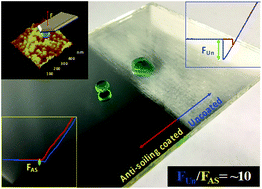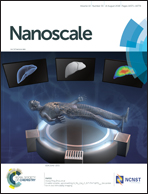Abstract
The anti-soiling (AS) performance of solar mirrors coated with a highly transparent, superhydrophobic nanoparticle-textured coating has been characterized. The AS coatings were created on the mirror surface by depositing nano-textured silica nanoparticle layers of ∼250 nm thickness using a draw-down coating process, followed by fluorination of the nanoparticles in a molecular vapor deposition process. Highly uniform surface features of the AS-coated mirrors (20 × 30 cm2, no measurable loss in specular reflectance, and water contact angle >165°) provided an outstanding AS performance. A 4× reduction in the rate of dust accumulation as determined by gravimetric measurement of the accumulated dust on coated versus uncoated mirrors was observed. Additional evidence of a significant reduction in soiling rate was determined during measurements of specular reflectance in an outdoor environment test. The adhesion force between a model sand particle and nano-textured coatings in the hydrophobic to superhydrophobic range was also studied. A dramatic decrease in adhesive force acting on the particle was observed with increasing surface hydrophobicity. The results align well with the observed dust accumulation on the AS-coated mirrors. The AS-coated mirror maintains a high reflectivity by shedding dust and resisting dust accumulation, providing a potential benefit when applied to mirrors in the solar field of a concentrated solar power generation plant.



 Please wait while we load your content...
Please wait while we load your content...